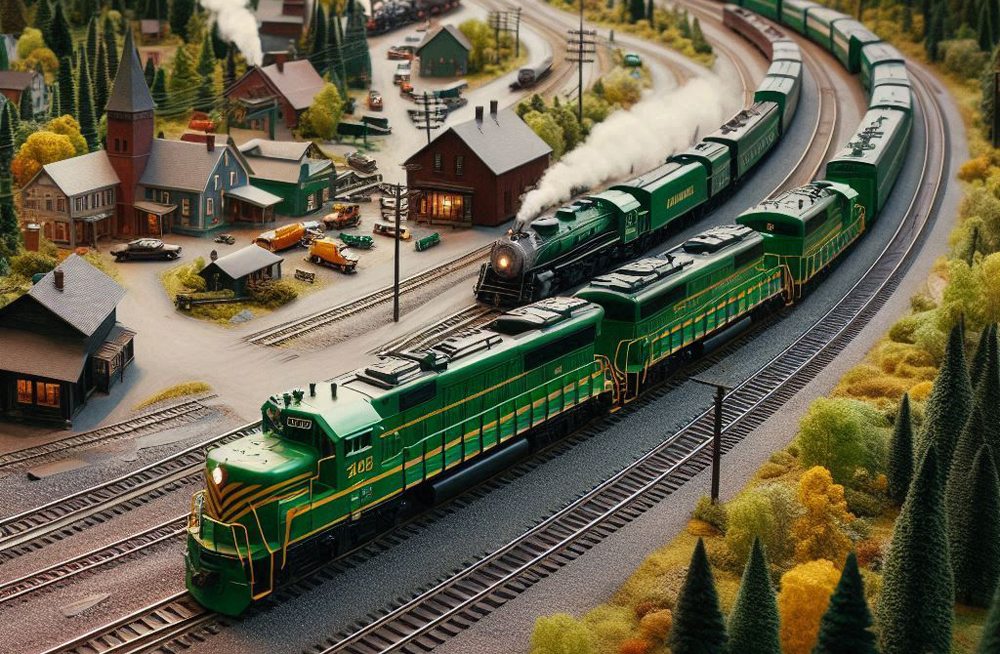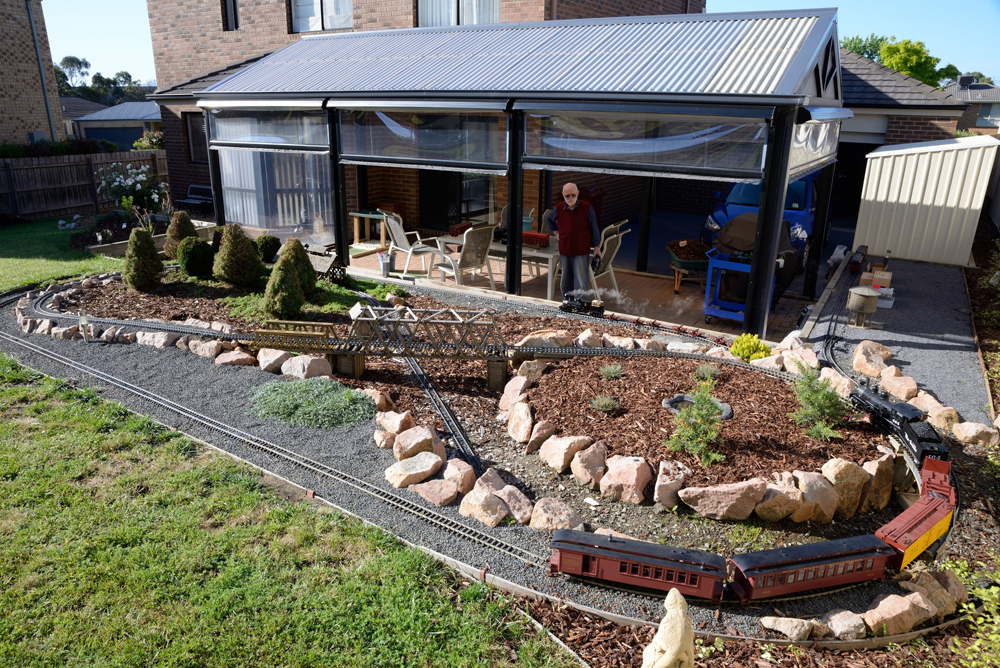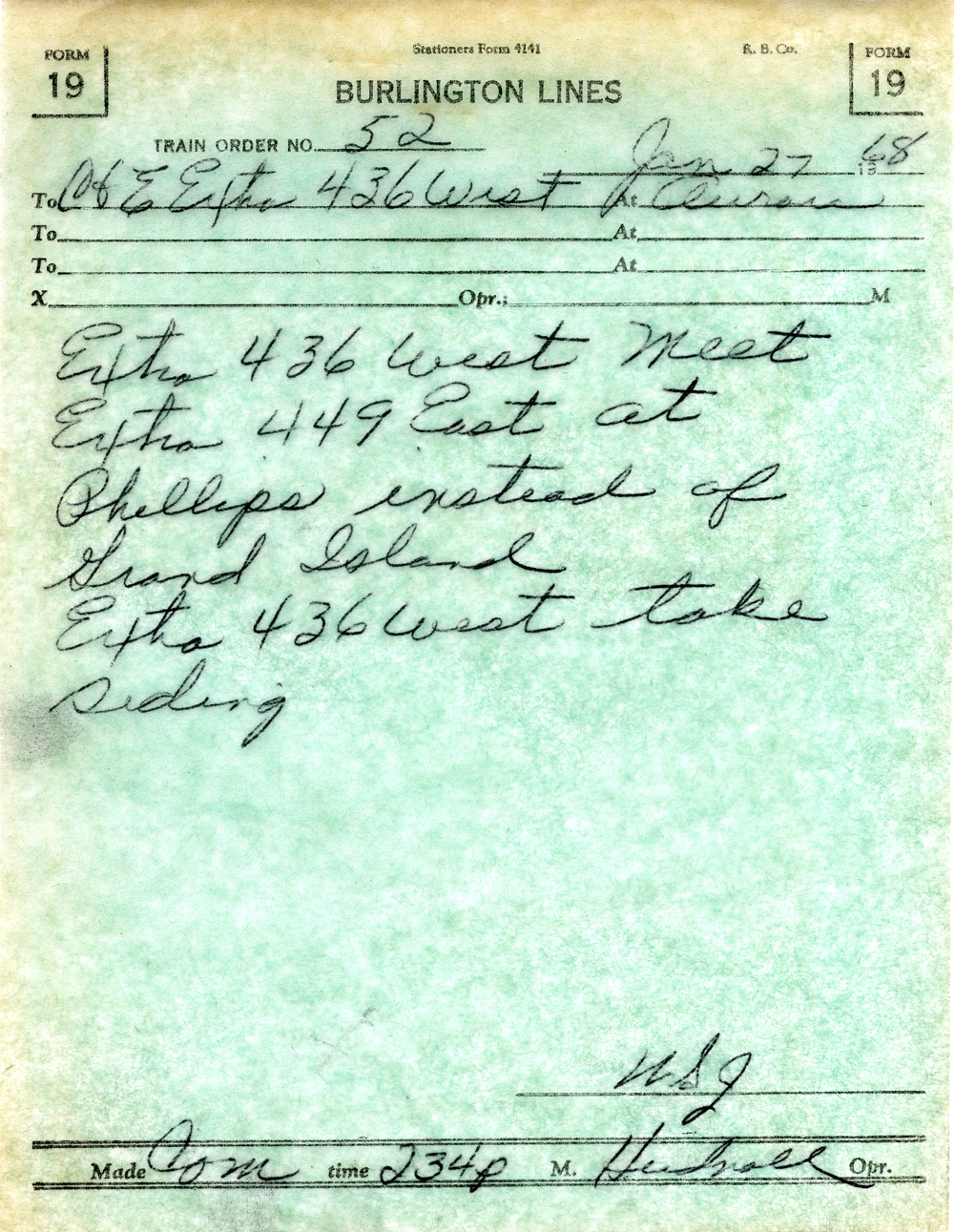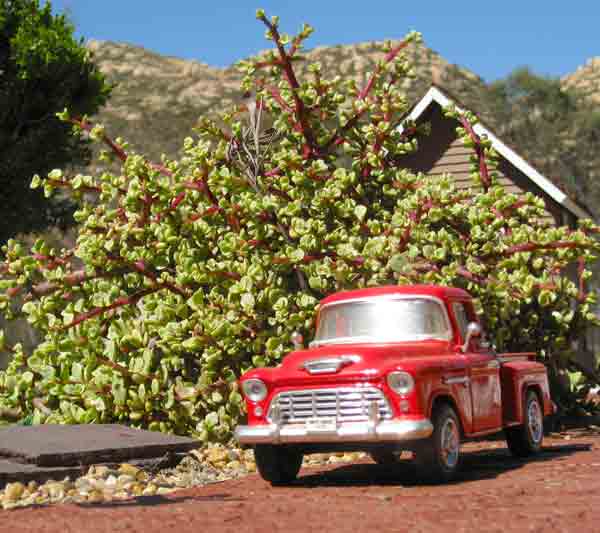
Common name: Rainbow bush, variegated elephant bush
Botanical name: Portulacaria afra f. variegata
Plant type: Perennial
Plant size: 4′ high x 4′ wide (easily kept much lower)
USDA Hardiness Zones: 10-11 (protected in other zones)
Cultural needs: Gravelly, well drained, neutral, or slightly acidic soil; full sun
The elephants and deer-like kudu of South Africa graze on elephant bush or spekboom, as the native people know it. This xerophyte remains succulent with little moisture but is okay in moister beds. The pictured rainbow bush, a variegated form with a green patch in the middle of a thick, cream-colored leaf, grows more slowly and prostrate than its ancestor, making it a tidy shrub. Leaving multiple stems creates a bush as wide as it is high. Training the plant into one central trunk makes it a good bonsai, highlighting the smooth red “bark”– thus its other name: mini jade.
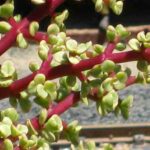
Pink flowers are rare and seeds even rarer, so it’s evolved a symbiotic relationship with grazing animals, which scatter uneaten branches that quickly root into surrounding soil. Gardeners can easily multiply rainbow bush by laying cut stems on soil until roots sprout. Bring cuttings indoors for overwintering on a sunny windowsill if you live in colder hardiness zones. Find this plant in the cactus/succulent area of your local greenhouse. Display it where the stems will pick up red color from cars, roads, and roofing, as in the Tabers’ Rios Canyon Railroad seen in the photo above.






